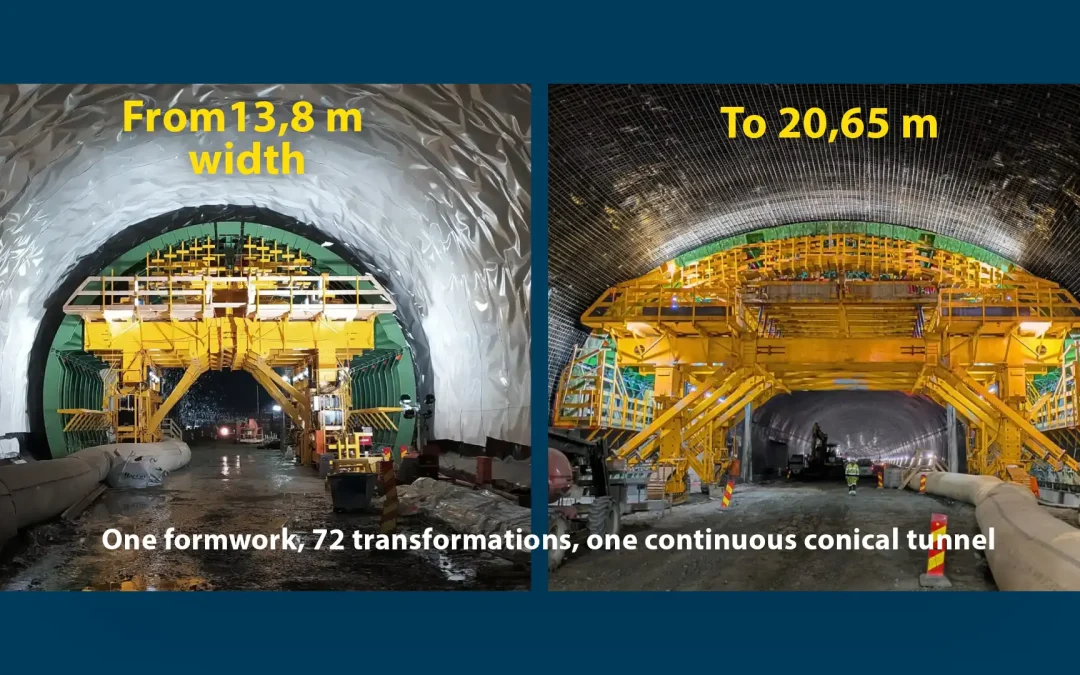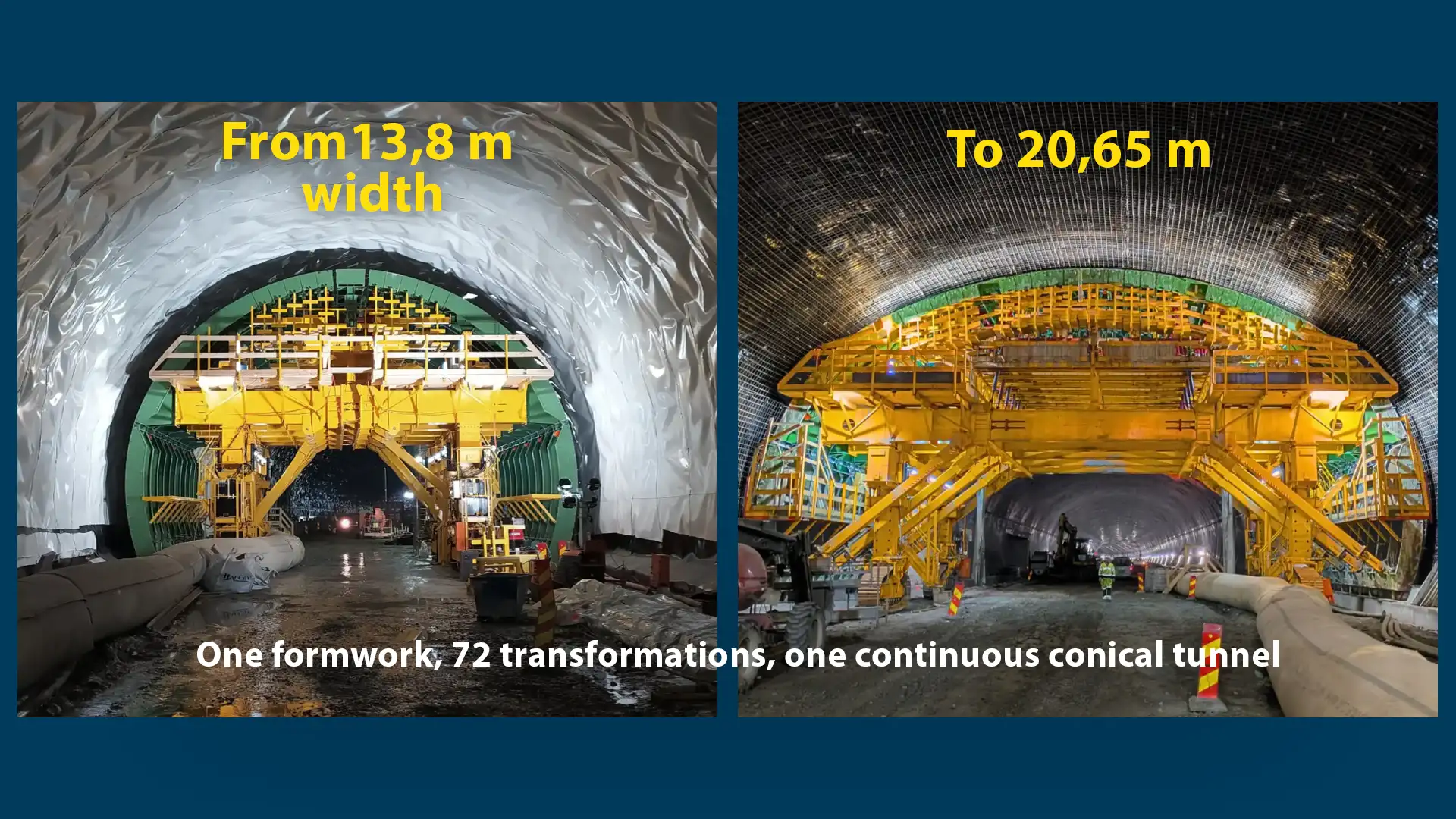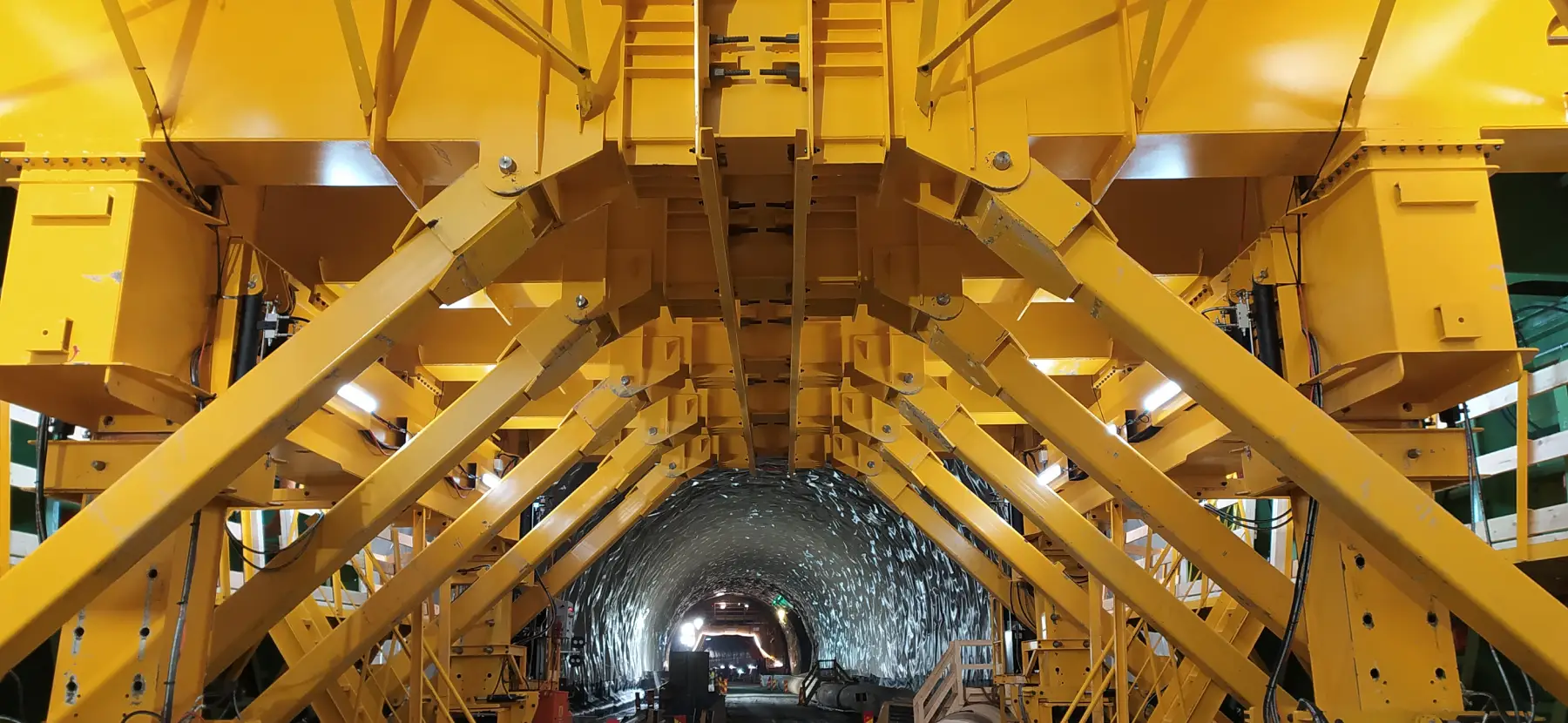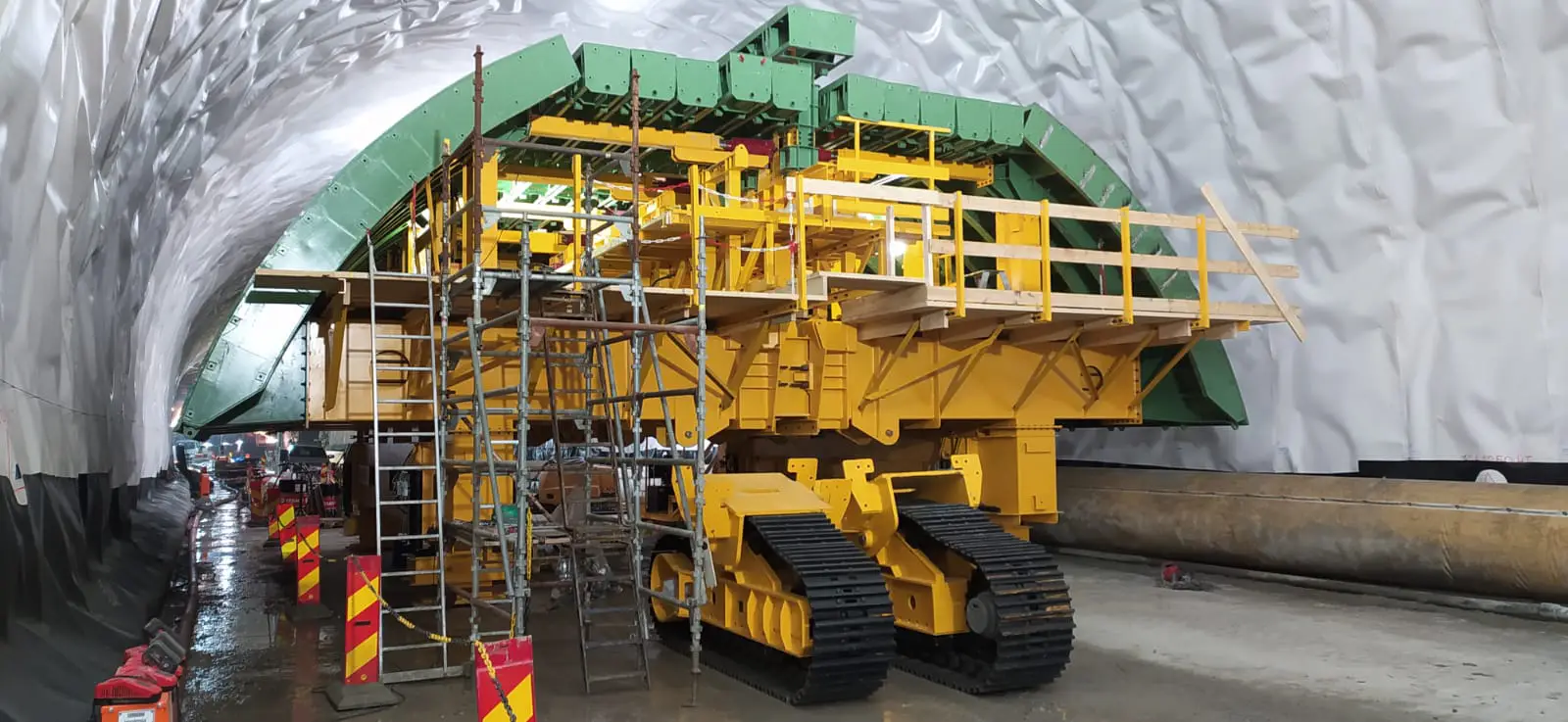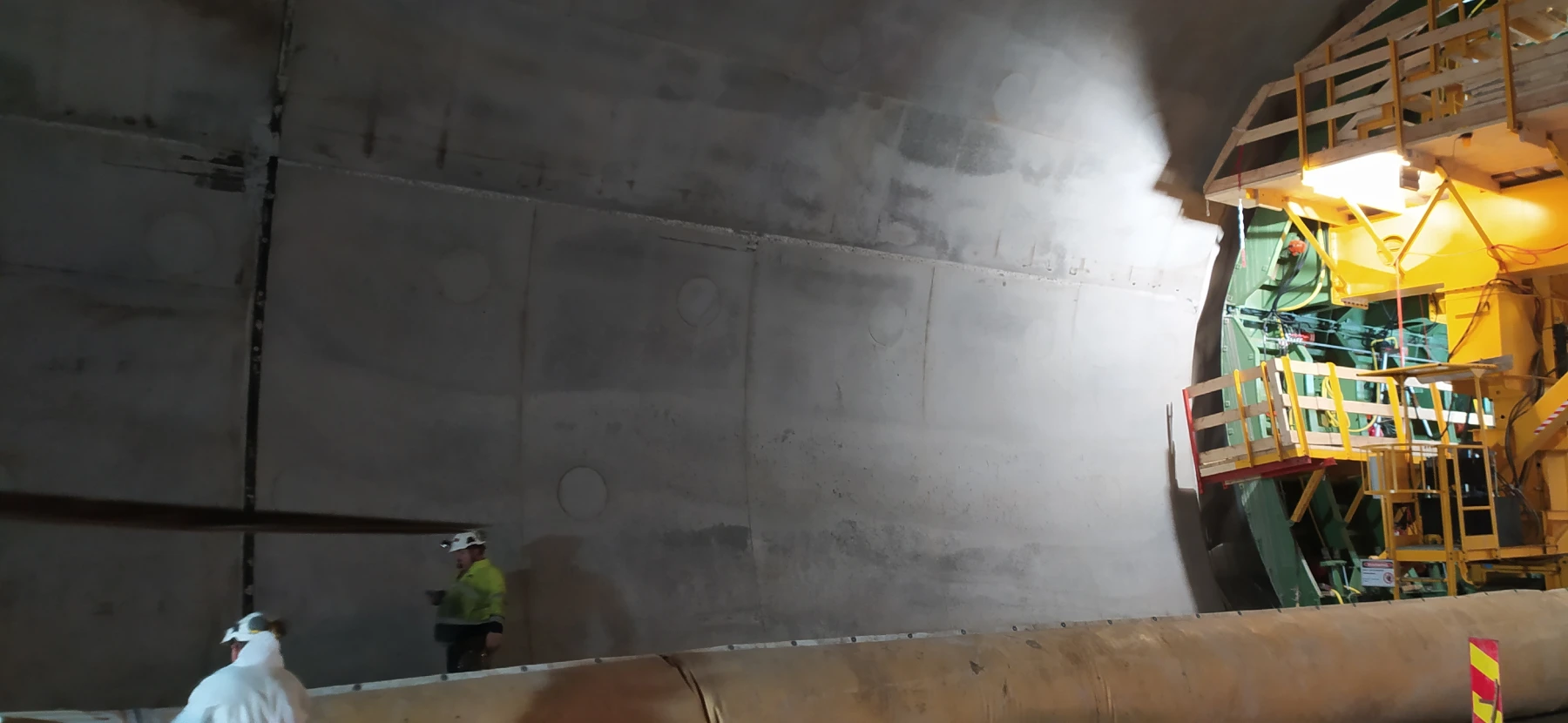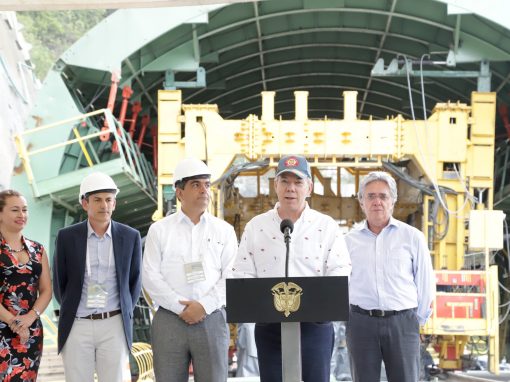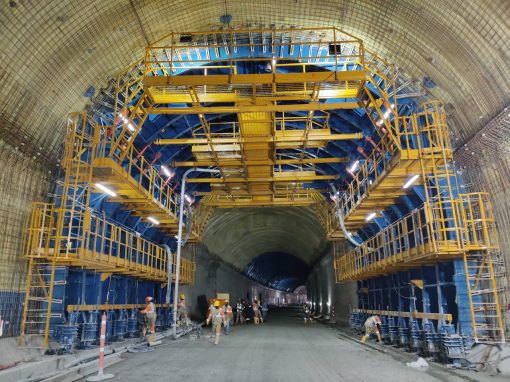Carlberg: a formwork that evolves with the tunnel
Reference: 210206B-TU Carlberg tunnel
Customer: Join Venture MossIA ANS (Acciona & Implenia Norge AS )
Country: Norway
Location: Moss
Year: 2021
Description:
The Carlberg Tunnel presents a unique typology within underground engineering, as its cross-section is not constant but continuously evolves from an initial diameter of 13.80 meters to a final width of 20.65 meters, generating a conical geometry with variable development.
This geometric challenge required the design and construction of a continuously variable formwork system, capable of progressively adapting to the tunnel’s dimensional changes along its alignment.
What was the challenge?:
For the execution of the lining, 78 placements were carried out, each approximately 12 meters long. Due to the variability of the section, none of the 78 placements were identical to the previous one.
The formwork had to be modified in each cycle to adapt precisely to the new geometry. This was achieved using additional 0.5-meter panels that progressively adjusted to the increasing diameter. This system allowed the cone’s continuity to be maintained and ensured dimensional accuracy of the lining at every advance.
Self-Reactive Structural System
After joint analysis with the client, a self-reactive load transmission system was chosen, meaning that no anchors to the ground were required.
The lateral pressure of the concrete was absorbed through the formwork carriage structure itself, which transmitted and balanced loads from side to side via transverse structural profiles. This approach reduced assembly times, avoided interference with civil works, and increased safety during operations.
Advancement and Assembly System
The movement of the formwork was carried out using a crawler system, ensuring precise positioning and stability in areas with variable geometry.
Additionally, a hydraulic self-lifting system was incorporated, allowing the formwork to be assembled and adjusted at ground level, avoiding the use of heavy cranes inside the tunnel. This innovative procedure significantly improved safety, assembly time, and operational efficiency.
Conclusion
The development of this conical formwork represented a significant technical advancement in the construction of variable-section tunnels, integrating modularity, self-reactive structural solutions, and autonomous mobility. Its design enabled the precise execution of a complex-geometry tunnel, ensuring high-quality finishes and optimizing construction resources.
Carlberg: a formwork that evolves with the tunnel
Reference: 210206B-TU Carlberg tunnel
Customer: Join Venture MossIA ANS (Acciona & Implenia Norge AS )
Country: Norway
Location: Moss
Year: 2021
Description:
The Carlberg Tunnel presents a unique typology within underground engineering, as its cross-section is not constant but continuously evolves from an initial diameter of 13.80 meters to a final width of 20.65 meters, generating a conical geometry with variable development.
This geometric challenge required the design and construction of a continuously variable formwork system, capable of progressively adapting to the tunnel’s dimensional changes along its alignment.
What was the challenge?:
For the execution of the lining, 78 placements were carried out, each approximately 12 meters long. Due to the variability of the section, none of the 78 placements were identical to the previous one.
The formwork had to be modified in each cycle to adapt precisely to the new geometry. This was achieved using additional 0.5-meter panels that progressively adjusted to the increasing diameter. This system allowed the cone’s continuity to be maintained and ensured dimensional accuracy of the lining at every advance.
Self-Reactive Structural System
After joint analysis with the client, a self-reactive load transmission system was chosen, meaning that no anchors to the ground were required.
The lateral pressure of the concrete was absorbed through the formwork carriage structure itself, which transmitted and balanced loads from side to side via transverse structural profiles. This approach reduced assembly times, avoided interference with civil works, and increased safety during operations.
Advancement and Assembly System
The movement of the formwork was carried out using a crawler system, ensuring precise positioning and stability in areas with variable geometry.
Additionally, a hydraulic self-lifting system was incorporated, allowing the formwork to be assembled and adjusted at ground level, avoiding the use of heavy cranes inside the tunnel. This innovative procedure significantly improved safety, assembly time, and operational efficiency.
Conclusion
The development of this conical formwork represented a significant technical advancement in the construction of variable-section tunnels, integrating modularity, self-reactive structural solutions, and autonomous mobility. Its design enabled the precise execution of a complex-geometry tunnel, ensuring high-quality finishes and optimizing construction resources.

